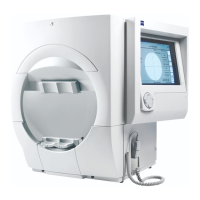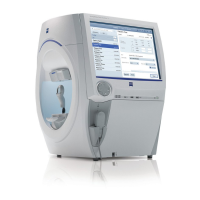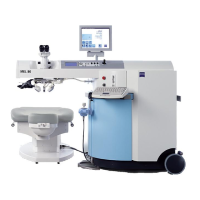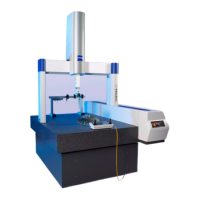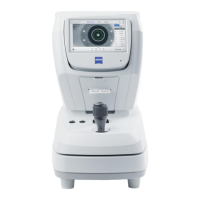Humphrey Field Analyzer II-
i
series User Manual 2660021145640 A
Guided Progression Analysis (GPA)
8-13
be removed from the GPA analysis. If there is no appropriate replacement exam of the same
type, then the following message will appear on the GPA Baseline printout:
“First examination should not be used as Baseline due to marked learning effects.”
We recommend that you exclude this exam from the Baseline, choose a more representative
Baseline, and then reprint the GPA.
• Fa
lse Positives of 15% or more: If an exam has false positives that are equal to or greater than
15%, it is not eligible for use in GPA, and will be marked with an exclamation point (!). In this
case, the SFA GPA printout will include the notation “*** Excessive High False Positives ***”.
Using the VFI Plot To Select Cons
istent Baseline Exams
The VFI Plot, which graphs the VFI values of all exa
ms included in GPA analysis as a function of the
patient’s age, may be used to help choose the correct tests to use for the Baseline. Located in the
center of the GPA Summary report, or the lower-left portion of the Baseline page of the Full GPA and
GPA Last 3 Follow-up reports (see Figure 8.6a), the VFI Plot can be used to verify the “similarity” of
the two Baseline visual fields. If there is a large differ
ence in the VFI values, the two Baseline tests
may not accurately reflect the patient’s true Baseline status. In addition, if the VFI of the first
Baseline is significantly below the VFI of the second Baseline, then the first exam may not be a
reliable measure of the patient’s visual function due to the learning effect (see Learning Effect on
8-12). In either case, it is often desirable to replace
one of the Baseline exams with a different exam
from the series.
Choosing to Re-Baseline a Patient
It is prudent to periodically review the current Baseline
exam choices, particularly when either of the
following events occur during the course of managing a patient’s disease:
• There is a change in the course of therapy, such as a
surgical intervention or a change in
medication.
• If learning effects are suspected or retrospectively identified (“GPA Case 2: Learning Effect,” on
page 8-19).
Step-by-step instructions for how to chang
e the Baseline can be found in section “Step 3: Modify
the GPA Exam Selection (Optional),” on page 8-32.
Clinical Interpretation of GPA Results
The GPA software identifies statistically significant change whenever it appears—in the form of
small triangles on the Progression Analysis Probability Plot. However, clinically significant
progression is best defined by repeatable, consistent change; for instance, as identified by the GPA
Alert and preferably confirmed by other clinical observations.
Test-retest variability of perimetry results depend on a numb
er of factors. These include scotoma
depth and location, overall visual field status (as estimated by Mean Deviation), the test strategy
used, and patient experience. GPA software takes into account and corrects for test point location,
defect depth, and overall visual field status in determining whether or not change at a particular
test point location is within or outside known statistical variability. New mathematical methods
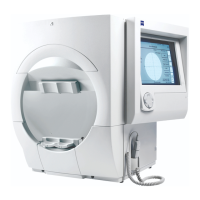
